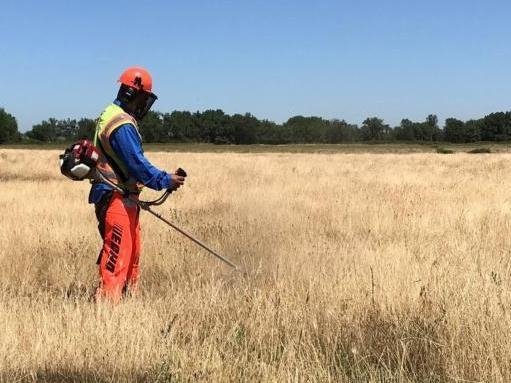One of the most widely used methods in weed control is the preventive method, which basically consists of avoiding the introduction, establishment and dissemination of new species in places where they do not normally occur.



▶ Another of the most used methods in weed control is the physical method. There are several physical methods that can be used to reduce the interference of weeds in crops.

▶ Credits: ucanr. – [Image of Public Domain]
≕ I invite you to stay tuned and read my next contribution ≔
Solarization, on the other hand, is another method used in weed control, since it is an efficient technique that controls seeds and plants of a wide spectrum of annual and perennial weeds. Solarization is defined as a hydrothermal or heating process using solar radiation.
Solarization as a method of weed control consists of covering moist soil with transparent plastic for four to six weeks during the hottest months (summer); the temperature achieved by the soil during this process is lethal to many pathogens, insects and weeds, and beneficial to the antagonistic or biological control organism.
By covering the soil of the crop with black plastic, a negative effect on the development of weeds is achieved due to the absence of light. This is relatively expensive and very laborious, black plastic and other synthetic covers should be evaluated locally to determine their cost: benefit ratio.

One thing to note is that good plastic mulches depend on the correct placement of the plastic; it is recommended to place it in the form of a "distaff" at the base of the plant, to prevent the growth of weeds in this area during the entire cultivation phase. However, synthetic mulches also reduce the risk of phytosanitary problems by reducing the use of tools for weed control in the areas close to the seedling, where the greatest number of plant roots are concentrated.
NOTE: Reference material.